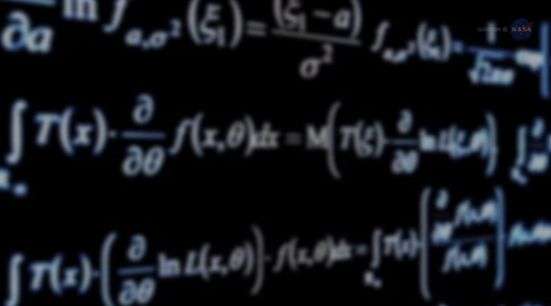Quantum foam

Quantum foam. It may sound like the name of a new craft beer, but it's something even more amazing.
To 'see' it, you have to dive down the rabbit hole of quantum mechanics—a branch of physics that describes how light and matter behave at atomic scales. In this bizarre realm, matter can be in two places at once; electrons can behave as both particles and waves; and Schrödinger's cat can be alive and dead at the same time. Or so the quantum theorists tell us.
Theirs is a world wildly different from Einstein's. In his highly successful theory of general relativity, Einstein tells us that energy=mass and mass warps space-time. Remember the physics analogy of the trampoline with a bowling ball in the middle? Like that ball, which gently distorts the trampoline's canvas, the sun warps the smooth 'canvas' of space-time enough to make planets move in curved orbits. A whole galaxy warps space-time much more. The more massive the body, the more warping. But if we could zoom in on the quantum realm, we wouldn't see a smooth expanse of canvas gently distorted by massive bodies. We'd see quantum foam.
Quantum gravity models predict that space-time is a seething foam of tiny regions where minisculenew dimensions unfurl and then furl back in on themselves, spontaneously appearing and disappearing with inconceivable quickness. These regions blink in and out of existence like the bubbles in the foam of a freshly poured beer. There is no such thing as empty space; there is only 'quantum foam,' everywhere. Such is space-time for a quantum physicist.
According to Eric Perlman of the Florida Institute of Technology, "The 'bubbles' in the quantum foam are quadrillions of times smaller than atomic nuclei and last for infinitesimal fractions of a second—or in 'quantum-speak', the size of a Planck Length for a Planck Time. According to string theorists, this requires an additional six dimensions. Space-time itself is fluctuating in these regions."
But this is all hear-say. We can't see this quantum foam in all its weird glory.
Researchers have to look for evidence of its effect to prove it's there and determine its nature. Perlman and his colleagues recently attempted to do so by using X-ray and gamma-ray observations of distant quasars by the Chandra X-ray Observatory, Fermi Gamma-Ray Space Telescope, and the Very Energetic Radiation Imaging Telescope Array System, or VERITAS.
"Because these bubbles are so small and last for such a short time, they can never be observed directly," says Perlman. "But they would affect light in an interesting way."
Each photon's path would be slightly different as it maneuvered through the all-pervading myriads of tiny fluctuations frothing up space-time. And, as a result, the distance each photon travels would be different.
Perlman says that "Over the cosmological distances that the photons travel from these distant sources, the effects of the fluctuations the photons encounter will accumulate. The more they accumulate, the more out of phase the light will get. Creating an image from a collection of such photons would be like trying to distinguish what one person is saying in a huge crowd of people talking. So it would be physically impossible to get a clear picture."
But the findings of Perlman and his team took a bit of the fizz out of the quantum foam.
"It seems space-time has to be smooth, at least at the level of 1000x time smaller than an atom, and space-time must be much less foamy than most models predict."
"But," he cautions, "this investigation does not go as far down as the Planck Length. So there is still some hope for the tiniest of bubbles."
Provided by NASA



















